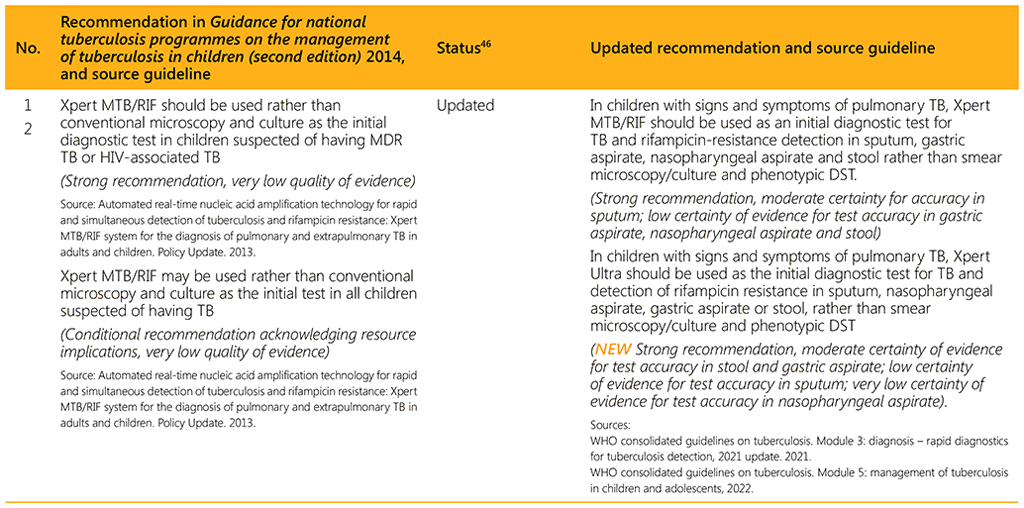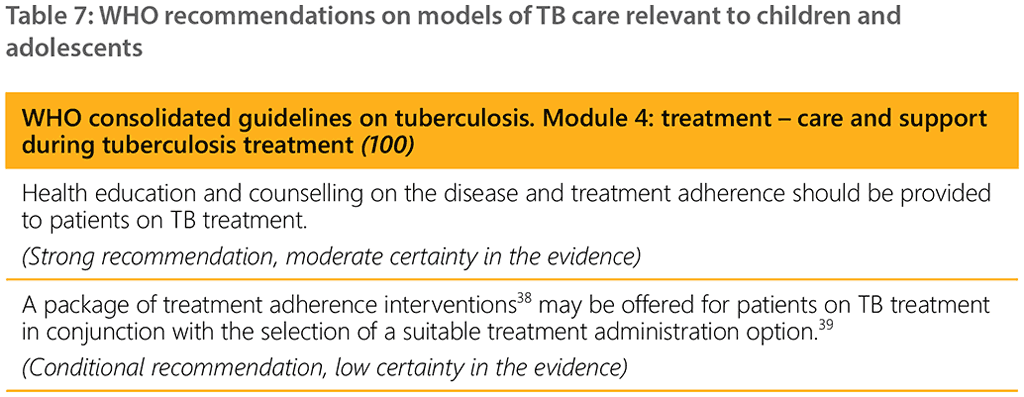Acknowledgements
The production and writing of this document – WHO consolidated guidelines on tuberculosis. Module 4: Treatment: Drug-susceptible tuberculosis treatment – was coordinated by Fuad Mirzayev, with the support of Medea Gegia, Linh Nguyen and Kerri Viney, under the guidance of Matteo Zignol, and the overall direction of Tereza Kasaeva, Director of the WHO Global Tuberculosis Programme.
 Feedback
Feedback
